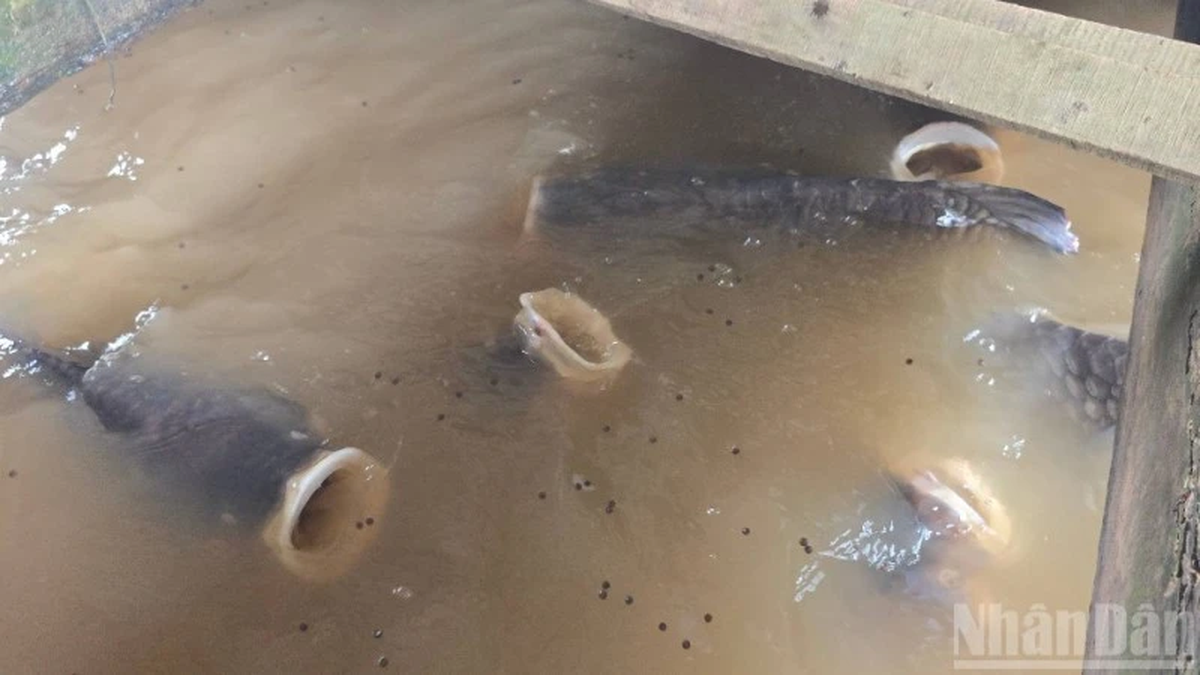 |
| During excavations at Saqqara, archaeologists discovered the 4,500-year-old tomb of an Egyptian prince . The prince was named Waser-If-Re. He was the son of King Userkaf, the first pharaoh of the Fifth Dynasty of the Old Kingdom. Photo: Egyptian Ministry of Tourism and Antiquities. |
 |
| Pharaoh Userkaf is believed to have ruled Egypt between 2494 BC and 2487 BC. This means that the tomb of Prince Waser-If-Re, who did not succeed his father as king of Egypt, is nearly 4,500 years old. Accordingly, this becomes one of the oldest tombs found in Egypt in recent years. Photo: Egyptian Ministry of Tourism and Antiquities. |
 |
| The tomb of Prince Waserif-Re was found with a number of precious artifacts spanning the Old Kingdom (2700 BC to 2200 BC) to the Late Period (664 BC to 332 BC). Photo: Egyptian Ministry of Tourism and Antiquities. |
 |
| In a statement to the media, Egypt's Minister of Tourism and Antiquities, Sherif Fathy, hailed the rare and exciting discovery. He said the discovery of Prince Waser-If-Re's tomb was "a milestone in uncovering new layers of Egypt's rich and ancient history." Photo: Charles J. Sharpe/CC BY-SA 3.0. |
 |
| One of the most remarkable elements of this discovery was found at the entrance to the tomb of Prince Waser-If-Re. It was a huge false door made of pink granite. It is the largest door of its kind ever discovered in Egypt, both in size and material. Photo: The Egyptian archaeological mission. |
 |
| The 4.5m high and 1.15m wide door is engraved with hieroglyphs detailing the prince's titles including "Prince Heir", "Governor of Buto and Nekheb", "Royal Secretary", "Vice Chancellor", "Judge" and "Priest". Photo: Egyptian Ministry of Tourism and Antiquities. |
 |
| These show that Prince Waser-If-Re was an important figure despite not ascending the throne. Photo: egypttoday. |
 |
| In addition to the tomb of Prince Waser-If-Re, archaeologists also found a rich collection of statues depicting the legendary pharaoh Djoser with his wife and 10 daughters. Photo: egypttoday. |
 |
| Initial analysis suggests that the statues were originally placed in a chamber near the Step Pyramid of Djoser before being moved to the tomb of Prince Waser-If-Re during the Late Period. The reason for this is currently unclear. Photo: egypttoday. |
Readers are invited to watch the video : The mystery of the 3,300-year-old "timeless" treasure in Egypt.
Source: https://khoahocdoisong.vn/khai-quat-lang-mo-hoang-tu-ai-cap-4500-tuoi-sung-so-su-that-post269482.html
























![[Photo] National Assembly Chairman Tran Thanh Man visits Vietnamese Heroic Mother Ta Thi Tran](https://vphoto.vietnam.vn/thumb/1200x675/vietnam/resource/IMAGE/2025/7/20/765c0bd057dd44ad83ab89fe0255b783)











































































Comment (0)